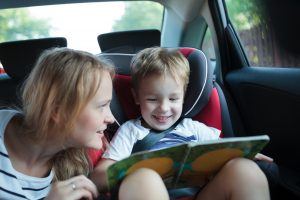I hope you will enjoy today’s post, Teaching Children to Love Reading. As a teacher and a parent, this topic is incredibly important to me and I hope you will find the information given – and the resources shared – useful!
Teaching Children to Love Reading
by Zara Lewis
Whether parents or grandparents, aunts, uncles or friends, the lifelong love of reading is one of the most precious gifts we can give to the children in our life. Reading contributes to academic success, broadens understanding and knowledge, enhances creativity, and engages the imagination, enabling the young reader to be anyone she wants to be, delving into realms far beyond the scope of everyday life.
As with any habit we hope to instill, reading must be nurtured from a child’s earliest days. Here are a few ways to encourage kids to develop a lifelong love of reading:
Read aloud
 One of the best ways to ensure that a child develops a lifelong reading habit is to read to them from early on. Like sponges, children take in everything in their environment – and typically model their own behaviors after those they witness in their elders. If they grow up around adults who are readers themselves—and who find or make the time to read to them—they too will likely become avid readers.
One of the best ways to ensure that a child develops a lifelong reading habit is to read to them from early on. Like sponges, children take in everything in their environment – and typically model their own behaviors after those they witness in their elders. If they grow up around adults who are readers themselves—and who find or make the time to read to them—they too will likely become avid readers.
Explore an array of literary genres
 There is no better way to nurture and sustain an interest in reading than unlocking the key to a vast chamber of literary genres. The possibilities are endless—from entertaining fairytales to time-honored classics, modified for the child’s age. Try to include poetry, as well as comics and graphic novels with visual interest. Folk tales, often translated from cultures across the world, also offer a rich reading experience.
There is no better way to nurture and sustain an interest in reading than unlocking the key to a vast chamber of literary genres. The possibilities are endless—from entertaining fairytales to time-honored classics, modified for the child’s age. Try to include poetry, as well as comics and graphic novels with visual interest. Folk tales, often translated from cultures across the world, also offer a rich reading experience.
Most kids love stories with plenty of action and are drawn to strong protagonists, such as courageous princes and princesses, powerful wizards, and superheroes, as well as regular children – like themselves – overcoming problems that they too may be facing. Stories about good conquering evil, featuring interesting, if imperfect, characters encourage compassion and help children make sense of their world.
Support libraries
 Despite the proliferation of e-readers, for learning and retention many experts stress the importance of print. As Ferris Jabr points out in “The Reading Brain in the Digital Age: The Science of Paper Versus Screens,” published by Scientific American: “Whether they realize it or not, many people approach readers and tablets with a state of mind less conducive to learning than one they bring to paper.”
Despite the proliferation of e-readers, for learning and retention many experts stress the importance of print. As Ferris Jabr points out in “The Reading Brain in the Digital Age: The Science of Paper Versus Screens,” published by Scientific American: “Whether they realize it or not, many people approach readers and tablets with a state of mind less conducive to learning than one they bring to paper.”
One way to ensure that children have access to print books is by preserving local libraries. For kids, libraries are a sanctuary, where they can get lost among shelves packed with intriguing books. Along with encouraging a vital sense of sharing and community, taking children to the library shows that the variety of books is endless and teaches them that they are free to choose what they would like to read.
Seek balanced literacy programs
 As Dorothy S. Strickland notes in “Balanced Literacy,” published by Scholastic, “In a truly balanced literacy program, how you teach is as important as what you teach.” Language fluency, which requires a mastery of reading, writing, and listening, should be emphasized across the curriculum, with appropriate activities introduced in all subject areas – from music and art to history, geography, and science. This encourages children to embrace reading willingly, less as a discrete skill to be obtained and nurtured, than as an essential part of their daily lives.
As Dorothy S. Strickland notes in “Balanced Literacy,” published by Scholastic, “In a truly balanced literacy program, how you teach is as important as what you teach.” Language fluency, which requires a mastery of reading, writing, and listening, should be emphasized across the curriculum, with appropriate activities introduced in all subject areas – from music and art to history, geography, and science. This encourages children to embrace reading willingly, less as a discrete skill to be obtained and nurtured, than as an essential part of their daily lives.
The Montessori and Waldorf schools, among others, use imagination and creativity in their teaching process. The Montessori program follows the child’s lead, as they develop an interest in the written word. In Montessori classrooms, children learn sounds by “writing” stories with a moveable alphabet, before they start reading. Tactile materials, such as sandpaper letters (children manipulate letters cut out of sandpaper), use the child’s playfulness to encourage them to learn and discover.
The Waldorf method uses a non-traditional approach that follows evolutionary development –i.e., humans developed spoken language, writing, then reading – focusing, from birth to age seven, on the spoken word. In first grade, the alphabet is introduced through imaginative play. This initial focus on the spoken and written word creates a positive relationship with language, leading naturally to reading.
As adult book lovers, teaching children to become lifelong readers is one of our most important – and rewarding – roles. With a little special care and attention, we can help little ones fall in love with reading – broadening their knowledge, teaching understanding and empathy, encouraging them to use their imagination to explore amazing new worlds, and giving them, in times of need, a safe haven for escape.

Finder her on Twitter: @ZaraELewis).
If you enjoyed this post, you might find these additional links interesting:
For ideas on how to build literacy, the “Ready to Succeed” program, sponsored by the University of California, offers a calendar with suggested daily activities, as well as a treasure trove of advice on selecting books for children.
“Teaching Reading” by Reading Rockets offers “everything you need to help young and struggling readers to succeed.”
Sarah Baldwin, author of the blog “Moon Child” and Bella Luna Toys, is a Waldorf early childhood teacher and author. Baldwin created site, in her words: as “a forum where I could share my knowledge of children and my love for Waldorf education… where I could answer families’ questions and interact with them. And, most importantly, … a place where I could support the magic of childhood and the importance of play — helping children and families find joy in life and learning.”
Deb Chitwood, author of the blog Living Montessori Now, writes about Montessori activities, homeschooling, and parenting.
Scholastic.com, home of Parent & Child Magazine, offers a one-stop site for information, ideas, and downloadable materials on children’s reading and literacy.
If you have any additional thoughts about teaching children to love reading or any links to share, please do leave me a comment below!



I'd love to hear your thoughts!